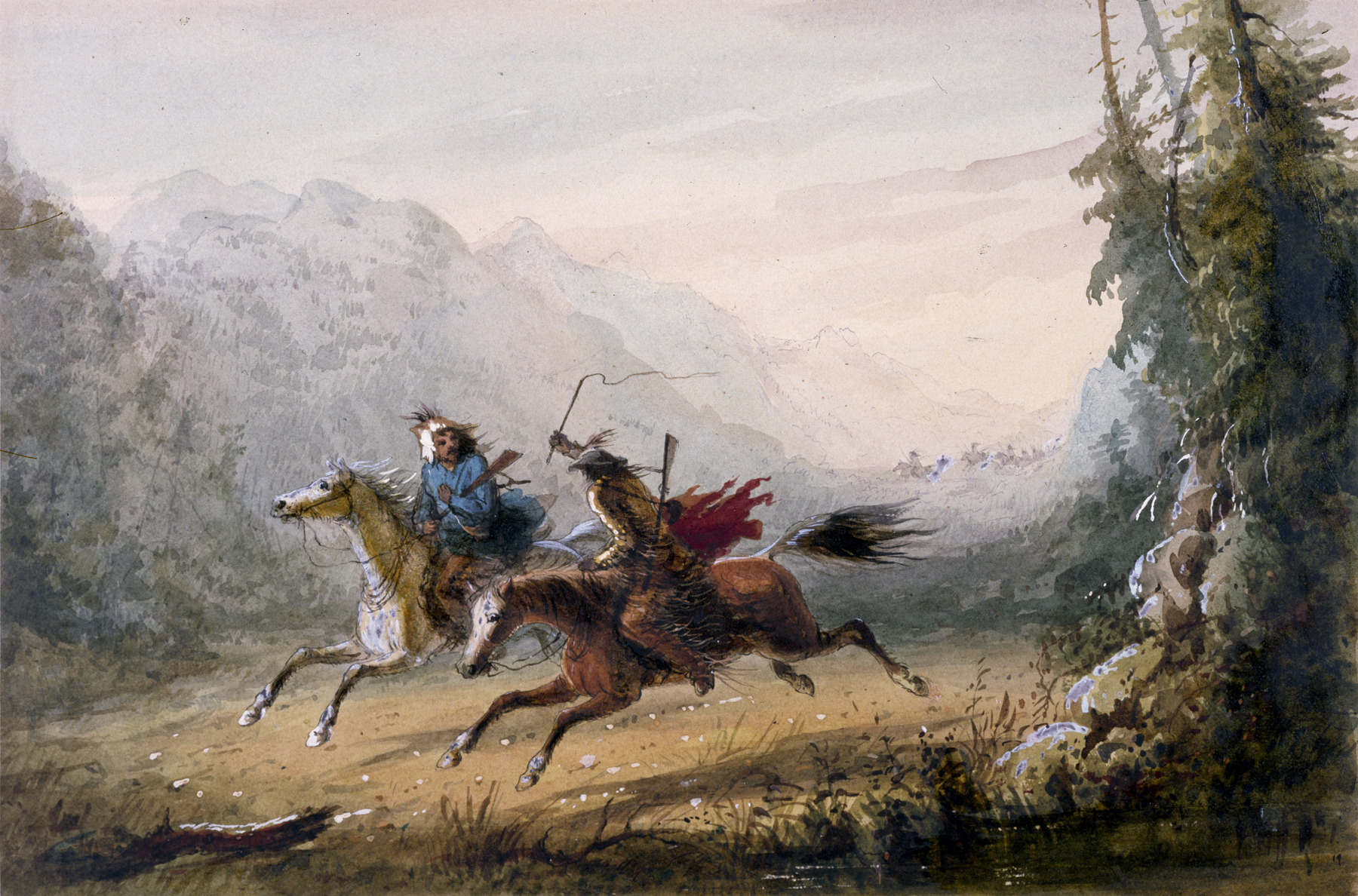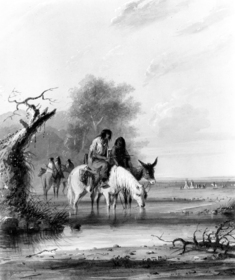Escape from Blackfeet
(18th and 19th Centuries )
Extracts from Alfred Jacob Miller’s original text, which accompanied his images of Native Americans, are included below for reference. These words, which shaped how Miller’s contemporaries viewed the watercolors, reveal the racism and sexism embedded in 19th-century exploration and colonization of the western part of what is today the United States.
"Black Harris and his brother Trapper are here making their escape from the terrible Blackfeet, the bete noires of the Rocky Mountains, the word is 'suave qui peut,' and spur and whip are both in requisition. This Black Harris always created a sensation at the cap fire, being a capital raconteur, and having had as many perilous adventures as any man probably in the mountains. He was a wiry form, made up of bone and muscle, with a face apparently composed of tan leather and whip cord, finished off with a peculuar blue-black tint, as if gunpowder had been burnt into his face." A.J. Miller, extracted from "The West of Alfred Jacob Miller" (1837).
In July 1858 William T. Walters commissioned 200 watercolors at twelve dollars apiece from Baltimore born artist Alfred Jacob Miller. These paintings were each accompanied by a descriptive text, and were delivered in installments over the next twenty-one months and ultimately were bound in three albums. Transcriptions of field-sketches drawn during the 1837 expedition that Miller had undertaken to the annual fur-trader's rendezvous in the Green River Valley (in what is now western Wyoming), these watercolors are a unique record of the closing years of the western fur trade.
Provenance
Provenance (from the French provenir, 'to come from/forth') is the chronology of the ownership, custody, or location of a historical object.
William T. Walters, Baltimore, 1858-1860, by commission; Henry Walters, Baltimore, 1894, by inheritance; Walters Art Museum, 1931, by bequest.
Exhibitions
| 2001 | The American Artist as Painter and Draftsman. The Walters Art Museum, Baltimore. |
| 1988 | Alfred Jacob Miller: Maryland and the West. The Walters Art Gallery, Baltimore; Washington College, Chestertown; Frostburg State University, Frostburg; Jewish Community Center of Greater Washington, Rockville. |
| 1971 | Alfred Jacob Miller. The Walters Art Gallery, Baltimore. |
Conservation
| Date | Description | Narrative |
|---|---|---|
| 12/1/1987 | Treatment | mounted; cleaned |
Geographies
USA (Place of Origin)
Measurements
H: 9 1/8 x W: 13 3/4 in. (23.2 x 35 cm)
Credit Line
Commissioned by William T. Walters, 1858-1860
Location in Museum
Not on view
Accession Number
In libraries, galleries, museums, and archives, an accession number is a unique identifier assigned to each object in the collection.
In libraries, galleries, museums, and archives, an accession number is a unique identifier assigned to each object in the collection.
37.1940.67



